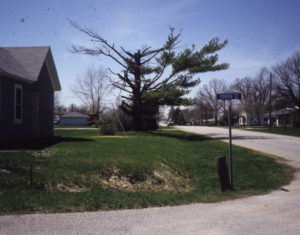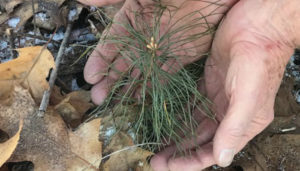The Life of a White Pine
White pine was originally a key player in the Great Lakes and New England ecosystems. A few little outliers of them also spilled westward into what became northeast Iowa. I know of no evidence that it grew around here in southeast Iowa, within the last millennia. But we now plant it extensively around here because it is fast-growing, attractive, long lived, and useful to wildlife and us. Its main predators are deer when the tree is young, and some sort of blight, which occasionally kills individuals. The wood is brittle, and storms passing through can leave a trail of branches and sometimes tops. But the tree is resilient and often an upper branch will slowly bend upward and become a new top, and as the tree gets older it will have a distinctive little jog in its trunk where this happened.
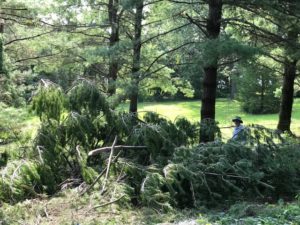
In a previous blog, I mentioned planting of local farm windbreaks more than a century ago. Today let us take a little tour through the life cycle of a white pine.
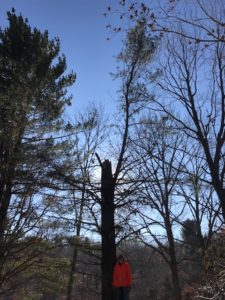
When the tree is young, each year’s growth of new branches forms a single radial whorl, like the spokes of a wagon wheel, usually 6-10 branches in each horizontal whorl, with a bare trunk above and below.
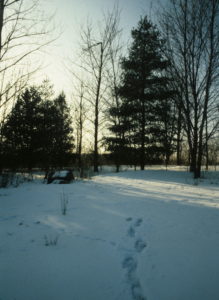
The spacing between the whorls of branches reveals past growth. If only a few inches between whorls, the tree has had a tough life, perhaps growing in a crack in a granite outcrop with a short growing season in southern Canada. But here in southeast Iowa, with deep soils, adequate rainfall, and lush summer days, it is not uncommon for white pine to put on as much as three feet of main trunk growth in a single year. As they get taller, they stick up into more aggressive winds, and lose small branches and their shape becomes more irregular – often evolving into pagoda-like layers.

